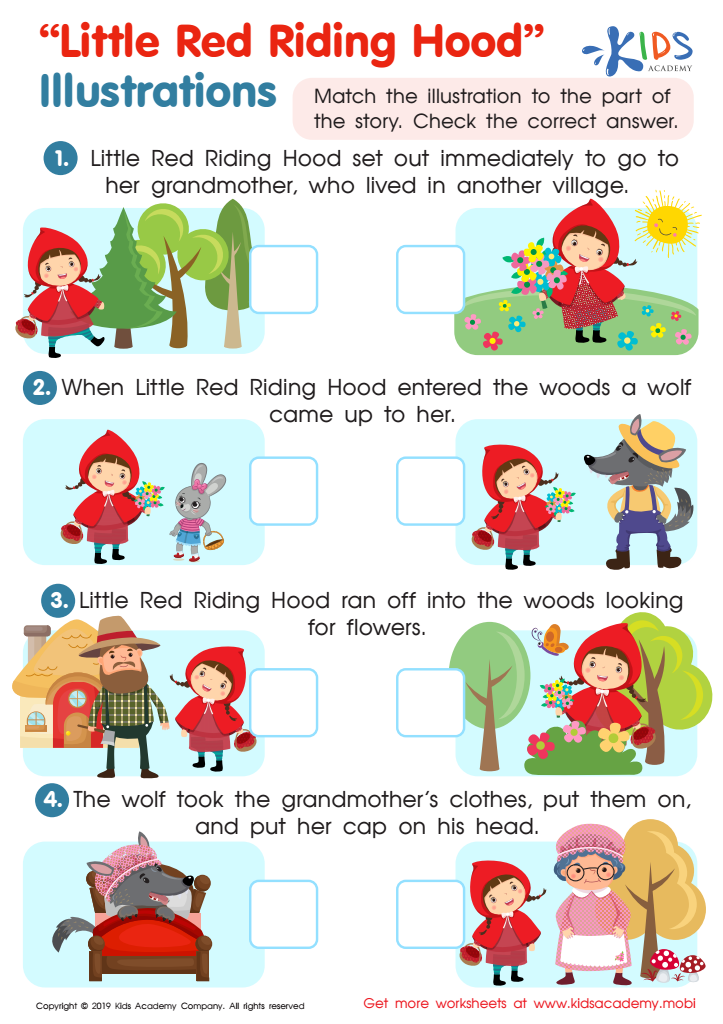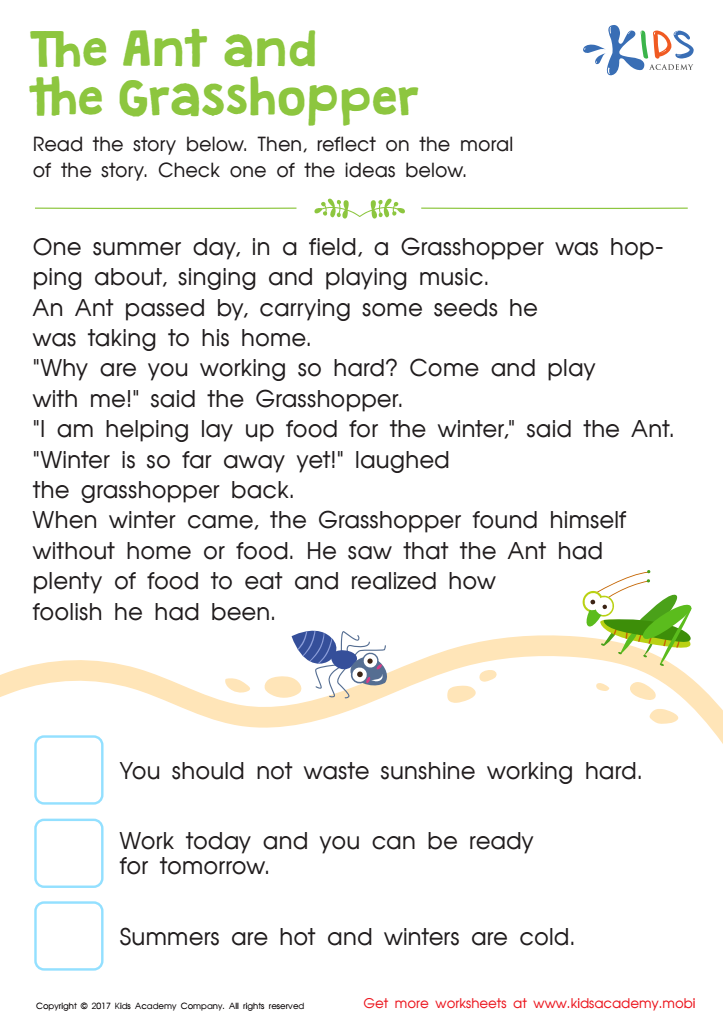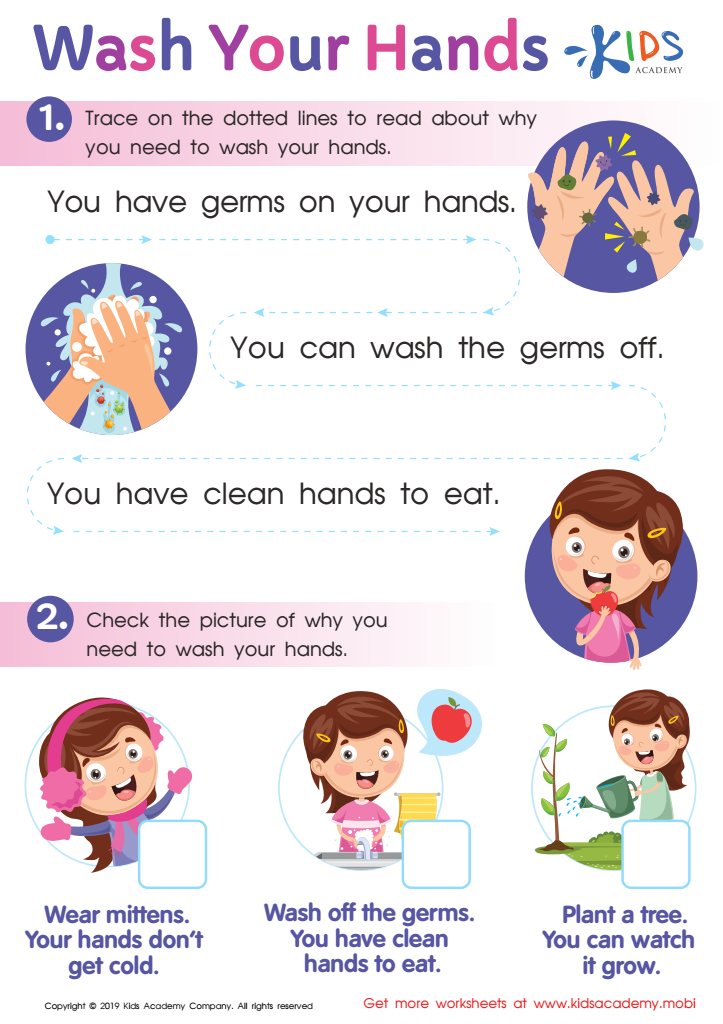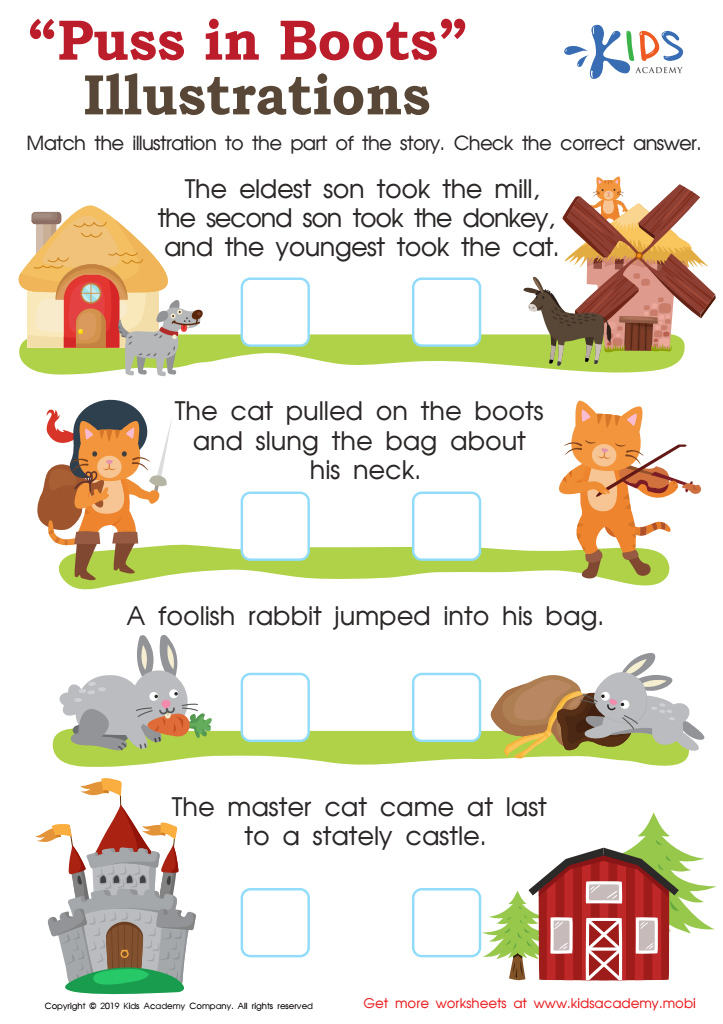Visual interpretation Reading Fiction Worksheets for Ages 6-7
4 filtered results
-
From - To
Unlock the world of imagination with our Visual Interpretation Reading Fiction Worksheets for ages 6-7! Designed to engage young learners, these worksheets encourage children to delve deeper into stories through visual exploration. Students will enhance their reading comprehension skills by interpreting illustrations, connecting emotions, and predicting outcomes. Each worksheet combines fun and learning, fostering creativity while improving interpretation abilities. Ideal for classroom use or at-home learning, our resources support early literacy development in a playful manner. Help your child develop a love for reading and storytelling with these enriching, interactive worksheets designed specifically for curious minds!


Little Red Riding Hood: Illustrations Worksheet


The Ant and The Grasshopper Printable


Wash Your Hands Worksheet


Puss in Boots Illustrations Worksheet
Parents and teachers should prioritize visual interpretation in reading fiction for ages 6-7 as it significantly enhances young learners' comprehension and engagement. At this developmental stage, children's cognitive abilities are expanding, and they learn effectively through visual contexts. Illustrations in fiction not only serve to captivate their attention but also reinforce the narrative, aiding in vocabulary development and critical thinking.
Visual interpretation encourages children to connect with the text on a deeper level. It allows them to infer meaning from images, understand character emotions, and make predictions about the story’s progression. This skill is essential for developing empathy, as children learn to interpret diverse perspectives through illustrations.
Furthermore, integrating visual elements into reading helps to accommodate various learning styles, particularly for visual learners who can grasp concepts more successfully through imagery. Also, discussing illustrations can stimulate conversations around themes, allowing for enrichened literary discussions and enhanced language skills.
By nurturing visual interpretation skills in young readers, parents and teachers are providing foundational literacy skills that will not only improve reading proficiency but also foster a lifelong love for literature and storytelling. Engaging with visual narratives effectively sets children on a path toward critical thinking and creativity.
 Assign to My Students
Assign to My Students
















